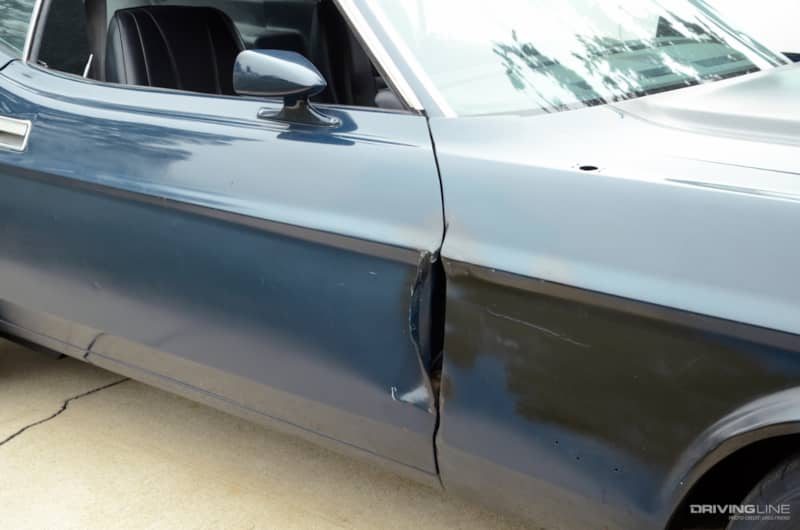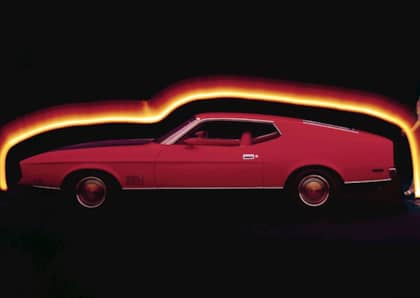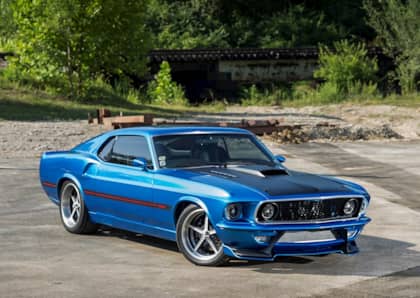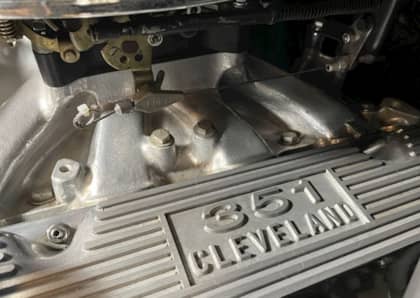5 Tips for Beginning a Project Car: 1973 Ford Mustang Mach 1 RestoMod Redux
When looking for a project car to restomod, it’s easy to fall in love. You’ve set your sights on a rustbucket with visions of the polished and completed car in your mind. This is a trap. Before forking over a pile of cash for a skeletal vehicle with “potential,” there are a plethora of things to consider if you ever hope to reach your project goals. It’s OK to fall in love, but don’t become blind.
Tip 1: Decide How the Vehicle Will Be Used
It’s important to decide how the car will be used. Will it replace your daily-driver or will it be a second vehicle? If it’s a second vehicle, where will it be stored? Daily drivers are held to much different guidelines than a second car, and if not already available, storage for a second car can be expensive and inconvenient.

My project car, a ‘73 Mustang Mach 1, started out as my daily-driver. I bought it in 1997 from a guy who ran a junkyard/pick-your-part and it came with a salvaged title, so I didn’t feel compelled to stick to a strict restoration. I drag raced it whenever time and money permitted, but through considerable use, it sustained significant body damage to the passenger side fender and door. While I was driving it, I bought a house that enabled me to store multiple vehicles and picked up a few projects that pushed the Mustang to the back burner.
Tip 2: Set a Budget and Stick to It
Project vehicles are expensive. Do your research on the vehicle you are looking for before you even look at what’s available. Check vehicle-specific forums for insider information and verify the cost of common replacement parts. Keep in mind that it’s hard to gauge mechanical problems with a not-running car, which is one of the reasons that running cars are worth more. You’ve probably seen the meme that says, “Get your kids into cars/motorcycles/boats young, and they’ll never be able to afford drugs.” This is all too true. RestoModding is a costly habit, and you’ll often be faced with the realization that you can’t afford the parts you want and end up picking out parts that you can actually afford.

I originally bought the ’73 for $4,000 back in the late-'90s. Fortunately, I didn’t need to spend any money to keep it, but because it sat for so long it developed many issues that need to be addressed in order to keep it on the road. For instance, the tires are 20 years old. I can drive the car, but I’m afraid if I do any aggressive driving they’re going to explode.
Tip 3: Don’t Bite off More Than You Can Chew
Know your level of expertise and don’t overestimate the time you have available to devote to it. Give yourself at least double the amount of time it would take an expert mechanic to complete any given job.

In the last year I realized that I had accumulated too many projects, and I wasn’t making real progress on any of them. If I ever wanted to enjoy any of them, I was going to have to make a change and choose which ones I would hold on to. It was almost like deciding which one of my children to keep. It was painful to let them go because I was in love with all of them, but I wanted to drive (abuse) the vehicles again instead of working on them all the time just to keep them running.
The Mach 1 was one of the vehicles I kept, but it’s been so long since I focused on it, it was like receiving a project car from my younger self. The good news: The car was garaged 90 percent of the time and I’ve kept it running throughout the 20 years. The bad news: The problems it had before did not fix themselves (big surprise), and back when I got the car, I was just getting into working on cars, so many issues I "fixed" before need to be fixed for real this time.
Tip 4: Keep the Car Running as Often as Possible
A car that doesn’t run isn’t good for much, and it’s certainly worth more when it’s running. I hate to say it, but life happens, and if you find the need to liquidate possessions, a running project car is worth many times more than a car that doesn’t run. Also, cars that run are more fun. I’d rather drive a car that looks like crap than stare at a car that looks great but doesn’t have a motor.

It doesn’t sound like a lot, but I try to start the ’73 and run it through the gears at least once a week. There were times in the last 20 years where the car went many months without a start or even a glance under the hood…and things started to go wrong. Oil and coolant leaks developed, rubber components degraded and seals dried up. Neglecting the car actually created more problems for me in the long run.
Tip 5: Make Friends
Manuals are great reference tools, but they will not answer all of your questions. Invariably, you’ll run into a problem you can’t figure out. Chances are the only way to get that answer is to ask someone who’s already successfully dealt with that problem. Once again, check the forums for answers. If there is no answer to your particular issue and you figure out how to solve it, join the forum and tell other people how you did it. Look for groups and car clubs who are like-minded and make friends. Friends are good for other reasons, too. It’s really hard to pull a V8 engine and transmission or hang a door without help.

I’ve needed lots of help with the ‘Stang. Years ago a valve cracked and I had to replace the motor. Future work includes a bunch of bodywork, and the passenger door needs to be replaced. Luckily, I live near my parents and a host of friends who have muscle car projects. When I need a hand, I just make a call. I also make myself available to my family and friends when they need help.
Bonus Tip 6: Don’t Get Discouraged
Getting into a project is easy. It’s hard to see it through to the end. You will run into a plethora of problems, but there’s always a way to fix them. Sometimes it takes a bunch of work, and sometimes it takes more money than anticipated. Stay focused, and when you get discouraged, step back and take a break. Keep in mind that the rarer your vehicle is, the more difficult and expensive parts will be. Try to know relative costs and issues you’ll face going into a build.

The most recent hindrance (in a long list of impediments) I experienced was coming to terms with the high-cost of paint and bodywork in California. Not long ago, I was pricing out some of the work and found out that without bodywork, a decent paint job was going to cost at least $8,000. I knew it was going to be expensive, but that was a shock to me and my budget. I know I have to do all the bodywork myself and I’m going to have to save up for a (long) while. I’m not excited about that, but I know how happy I’ll be when it’s looking great (and it’ll be worth a lot more).
Look for a wheel and tire upgrade coming soon.











